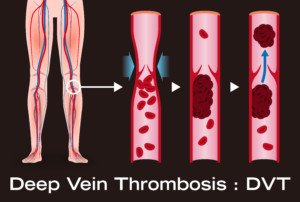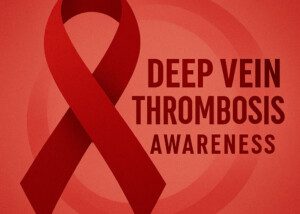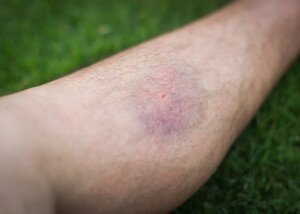
Find out what can possibly cause a DVT when there’s no risk factors and no clotting disorders.
A DVT is a deep vein thrombosis: a blood clot in a vein deep in the body, usually in the leg, but sometimes also in the hip area.
In some cases of these blood clots, the patient seemingly did nothing to bring it on (such as being a smoker and sitting cramped in an airplane for several hours)
Additional DVT Risk Factors
Risk factors for a DVT are quite numerous and include prolonged immobility from any kind of traveling, joint replacement and abdominal surgery, birth control pills, hormone replacement surgery, obesity, lack of regular exercise, elderly age, pregnancy and dehydration.
And of course, blood clotting disorders raise the risk.
However, people have been known to get a DVT who have none of the risk factors and who test negative for clotting disorders, leaving the patient, who may even be a young lean gym rat who can’t sit still, baffled.
“In some cases the cause of a DVT is never found,” says Darren Klass, MD, clinical instructor of interventional radiology at the University of British Columbia and the Vancouver Coastal Health Association.
Dr. Klass explains, “In young healthy patients with no risk factors, mechanical compression of the left iliac vein by the right iliac artery in the pelvis may cause a spontaneous DVT. This entity is called May-Thurner syndrome.”
A person may never know they have May-Thurner syndrome until a deep vein thrombosis develops.
“A similar entity exists in the chest, where the subclavian vein (continuation of the vein from your arm) may become compressed by muscle or bone in the chest and cause a DVT,” says Dr. Klass. “This is called Paget-Schroetter syndrome.”
In this condition, repetitive and strenuous upper body activity (swimming, gymnastics, wrestling) is often linked to the deep vein thrombosis.
“Young patients with DVT with no risk factors will be investigated by their physician and these entities excluded,” continues Dr. Klass.
“Other more benign causes may simply be due to dehydration; patients who do not keep their fluid intake up may become dehydrated, which makes the blood more susceptible to clotting.
“In these cases often the dehydration is corrected long before the clot is discovered, and the cause is never found.
“These cases are very few and often a cause can be found after extensive investigation.”
 Dr. Klass specializes in interventional oncology, aortic intervention, PVD, venous disease and venous access. He has been inducted into The Leading Physicians of the World, published by the International Association of HealthCare Professionals.
Dr. Klass specializes in interventional oncology, aortic intervention, PVD, venous disease and venous access. He has been inducted into The Leading Physicians of the World, published by the International Association of HealthCare Professionals.
 Lorra Garrick has been covering medical, fitness and cybersecurity topics for many years, having written thousands of articles for print magazines and websites, including as a ghostwriter. She’s also a former ACE-certified personal trainer.
Lorra Garrick has been covering medical, fitness and cybersecurity topics for many years, having written thousands of articles for print magazines and websites, including as a ghostwriter. She’s also a former ACE-certified personal trainer.
.









































